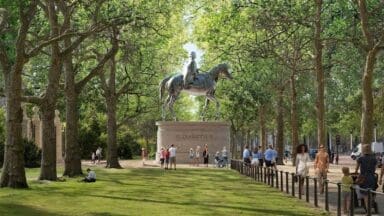
Briefed to ‘create a memorial masterplan that celebrates Queen Elizabeth II’s extraordinary life of service and provides a space for pause and reflection’, leading design teams competed in the high-profile contest. Organised by Malcolm Reading Consultants, the competition has been described as one of the most significant public design initiatives in modern British history.
The Queen Elizabeth Memorial Committee’s selection panel selected Foster + Partners’ design concept from a shortlist of proposals by five leading multidisciplinary teams. In addition to the winning design team, the competing teams included Heatherwick Studio, WilkisonEyre, J&L Gibbons, and Tom Stuart-Smith.
During the competition the public were encouraged to give their views on the design concepts. The King had no input in the choice, but Buckingham Palace was aware of the shortlisted entries.
The memorial is to be located in St James’s Park and includes an area of the Park adjacent to The Mall at Marlborough Gate, an area adjacent to Bird Cage Walk and replace the existing bridge between the two with a new crossing.
Shortlisted entries for Queen Elizabeth II memorial
- Winner: Foster + Partners with Yinka Shonibare and Michel Desvigne Paysagiste
- Heatherwick Studio with Halima Cassell, MRG Studio, Webb Yates and Arup
- J&L Gibbons with Michael Levine RDI, William Matthews Associates, Structure Workshop and Arup
- Tom Stuart-Smith with Jamie Fobert Architects, Adam Lowe (Factum Arte) and Structure Workshop
- WilkinsonEyre with Lisa Vandy and Fiona Clark, Andy Sturgeon Design, Atelier One and Hilson Moran
The winning design
Foster + Partners’ winning design concept celebrates Queen Elizabeth’s life through a time of change, balancing tradition and modernity, public duty and private faith, the United Kingdom and a global Commonwealth. Multifaceted, the design illustrate how she brought these dualities together: two gates, two gardens, joined by a unity bridge inspired by the late Queen’s wedding tiara, unifying path and spaces to bring people together. The design also includes figurative sculptures and new Prince Philip Gate and artistic installations that celebrate the nation’s diversity. The design concept will be subject to change as it undergoes refining.
“It is an honour and a privilege for our team to be awarded this project. Her Majesty loved history and tradition, so this is reflected in the inspiration of the original design of St James’s Park by Sir John Nash. Some of his principles have survived, whilst others have been lost and will be restored, creating a family of gardens joined by gently meandering paths. I knew The Queen on formal occasions but also enjoyed her informality when attending events as a member of the Order of Merit. We have sought to reflect these qualities of the formal and informal in our design, with an appeal across a wide range of ages and interests.
“To these ends, we have discreetly stretched the boundaries of art and technology with a deliberately gentle intervention. Our design will have the minimum impact on the nature and biodiversity of the Park and it will be phased to ensure that the precious route across it will never be closed. At the heart of our masterplan is a translucent bridge symbolic of Her Majesty as a unifying force, bringing together nations, countries, the Commonwealth, charities and the armed forces,” said Founder and Executive Chairman of Foster + Partners, Lord Norman Foster.
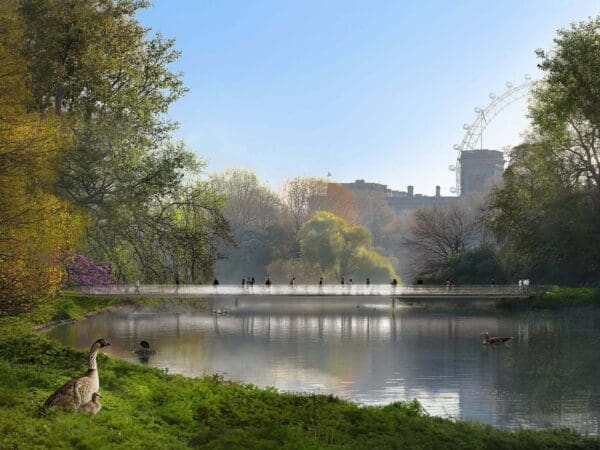
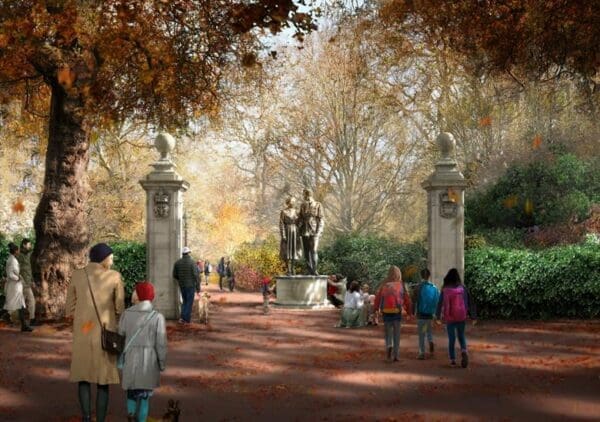

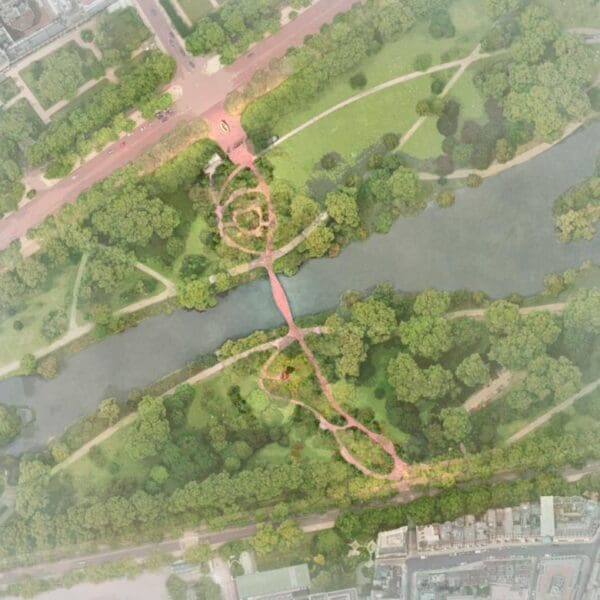
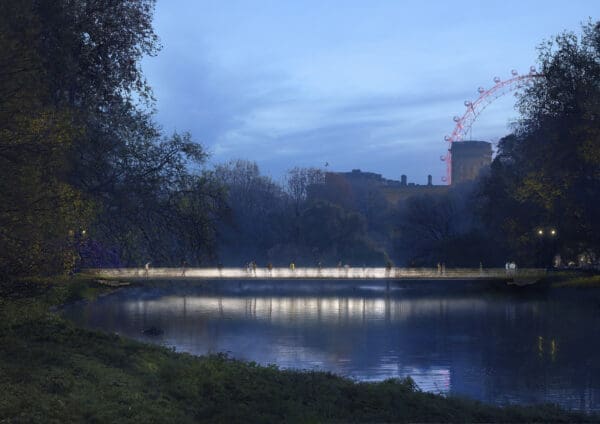
Of all the designs, this was perhaps the most traditional concept of the shortlist, whose other contenders included giant fungi, a golden giant Oak tree and threads of pathways. Columnist Ike Ijehof of the Architect’s Journal stated that he had predicted that the Foster design would be the most popular with the public as it “comes closest to the public idea of what a memorial should look like.”
According to the Queen Elizabeth Memorial Committee’s selection panel the Foster + Partners’, design, balanced “formal and informal elements, impressive and capable of creating an engaging landmark to endure for generations to come”. The panel also said that they “valued Foster + Partners’ artistry, use of space, technical skills and their sensitivity to the memorial’s location”.
Committee Chair Robin Janvrin said: “Selecting the winner was no easy task. All five of the shortlisted teams produced creative designs of the highest quality. Foster + Partners’ ambitious and thoughtful masterplan will allow us and future generations to appreciate Queen Elizabeth’s life of service as she balanced continuity and change with strong values, common sense and optimism throughout her long reign.”
Foster + Partners will now develop its initial concept in close partnership with the Queen Elizabeth Memorial Committee. They will work together to select a sculptor to design the memorial’s figurative element – the chosen sculptor will be announced later this year.
The final design will be formally announced in April 2026, alongside a legacy programme, to coincide with what would have been Queen Elizabeth’s centenary year.

